That’s a wrap for the week

This week’s blog is now closed. You can follow current interest rate news on our latest live blog.
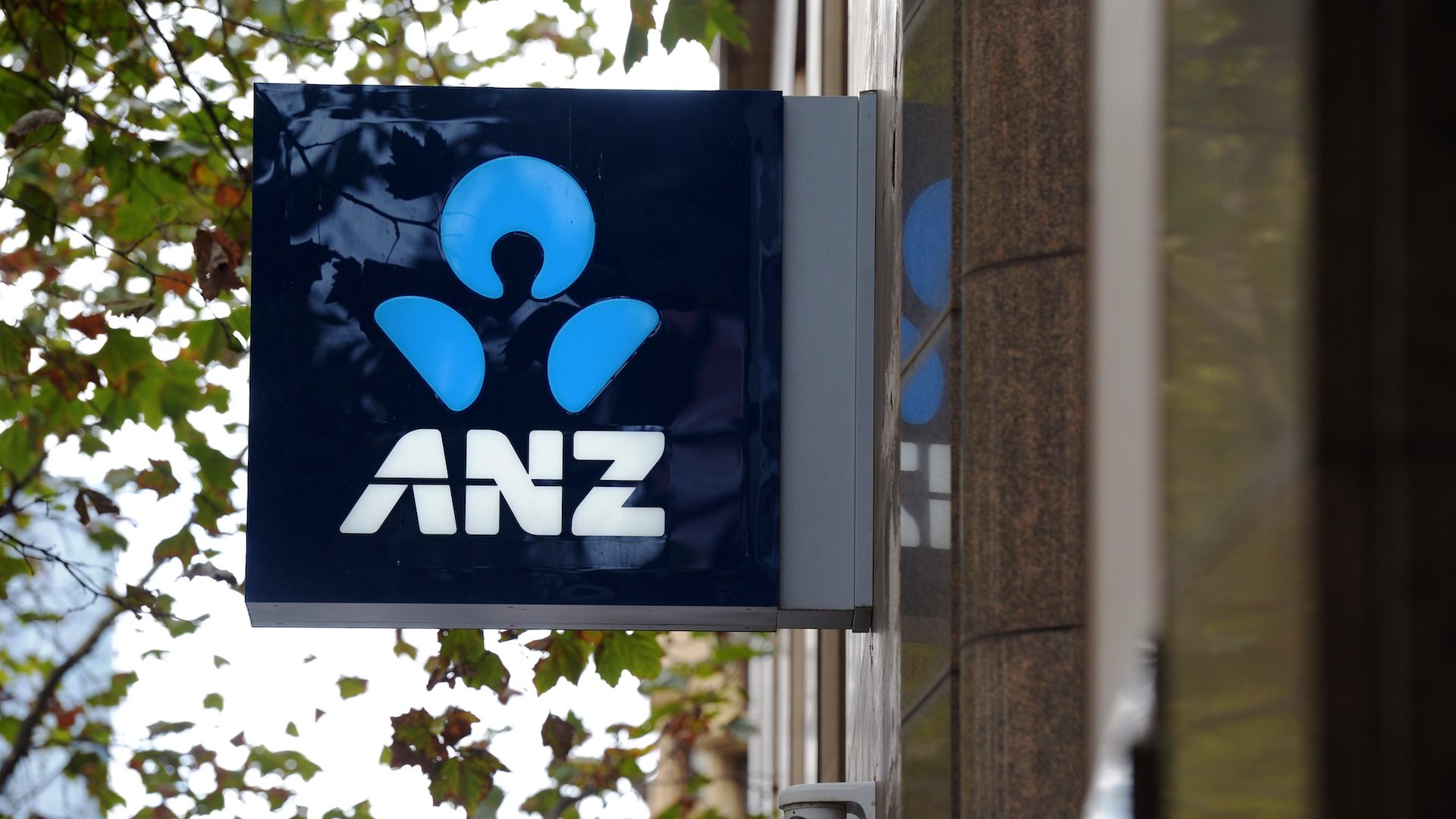

This week’s blog is now closed. You can follow current interest rate news on our latest live blog.

Okay that’s all for today, folks! Thanks for joining us and just in case you missed all the news, here’s what we learned this week:
See you back here next week for more interest rate and personal finance news, including more on the Budget and upcoming RBA announcement.
Have a great weekend!


NAB has quietly made another cut to its savings account bonus rate, the second since the Reserve Bank of Australia (RBA) lowered the official cash rate back in February.
The bonus interest rate on NAB’s Reward Saver has been cut by 0.10%, dropping it down to 4.65% p.a. (0.10% p.a. base rate + 4.55% p.a. bonus rate).
When NAB first adjusted its savings rates last month, it fell from 5.00% p.a. to 4.75% p.a.
That means NAB has sliced 0.35% p.a. off its bonus interest rate in less than a month.
While those with NAB’s Reward Saver account are facing cuts, the bank has given a boost to its online-only iSaver account.
The NAB iSaver has benefitted with a 0.15% p.a. increase to its introductory rate, raising it to 4.90% p.a. for your first four months (that’s a 1.75% p.a. base rate + 3.15% p.a. introductory rate).
Mozo’s finance expert, Rachel Wastell, says the change is taking 10 basis points away from the more accessible Reward Saver – which can be opened in a branch – and moving it over to the iSaver account which can only be opened online.
“This is just another example of how the Big Four banks are pushing savers to go digital, and the focus on securing new savings account customers rather than rewarding existing customers,” says Wastell.
“The click and collect model these big banks are taking when it comes to home loan rates is also starting to emerge in the savings space, so now is the time for savers to double check their rate, and see if they can get a better deal outside the majors.”
Unhappy with your rate? You can compare some of the best savings accounts in the Mozo database to search for a better deal.


The latest Corelogic data shows that more than a third of loss-making home resales in the three months to December had a very short ownership period.
Corelogic's head of research, Eliza Owen says that 26.5% of loss-making sales in that time had a "hold" period of two-to-four-years only.
"Short selling times can increase the risk of making a loss, because you expose yourself to short-term cyclical movements, where value gains in property are generally long term," Owen said.
Owen adds that this makes sense given how many housing markets are yet to recover record-high values reached in early 2022, just before the RBA began lifting the cash rate target from May of that year.
As of February this year, CoreLogic estimates around a third of suburbs are below the dwelling values of April 2022.
Of the loss-making resales held for two-to-four-years, or 1,100 sales, just under 40% were across Greater Melbourne, with the SA4 Melbourne – Inner market accounting for 6.7% of loss-making resales in this short hold period.
"The high incidence of loss among Melbourne resellers in such a short hold period reflects other indicators of financial stress in this market, such as weaker economic outcomes for the city since the pandemic, elevated listings volumes and weaker property market conditions more broadly." - Corelogic's head of research, Eliza Owen
In other capitals such as Sydney, new listings have been fairly contained and that has helped the values in many suburbs stabilise or actually increase. Of course, that situation also doesn’t allow for many new buyers to enter the market either because there are few discounts.
Corelogic says Brisbane, Adelaide and Perth have had the best profit-making resales in the last quarter of 2024.
If you’re on the hunt for a property, you’ll need to consider your home loan. Our experts at Mozo hand-pick some of the leading home loans in our database for you to start comparing.
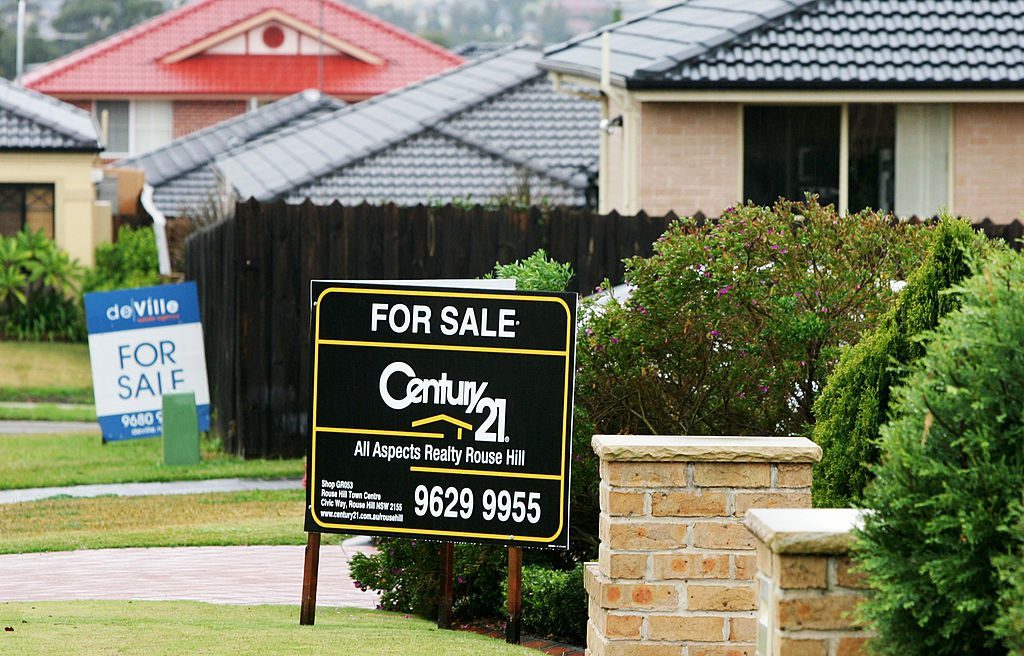

The high cost of living, housing affordability, and aged care dominate financial concerns as the 2025-2026 Federal Budget approaches, according to a new study from Viridian Advisory.
With the March 25 announcement looming, financial advisers say more clients are asking about how the budget might impact their household budgets and savings strategies.
The survey found that 82% of advisers said that while clients remain neutral about the upcoming budget announcements, they're increasingly concerned about changes to superannuation and tax.
The survey also found increased budget-related enquiries, with aged care and housing pressure as leading concerns, followed by queries about tariffs, interest rates, debt levels, and Trump administration impacts.
For households feeling the pinch, it’s a good idea to review budgets, including general savings, how much is in emergency funds, and government assistance eligibility (like energy rebates).
Looking for banking and interest rate news? Check out the Mozo live tracker for more!

ANZ has cut its one-year fixed home loans by 0.25% p.a., finally bringing it down to a rate starting with 5.
ANZ’s one-year fixed rate is now 5.89% p.a. (6.66% p.a. comparison rate*) for owner occupiers with a loan-to-value ratio (LVR) below 80% – that’s a deposit of at least 20%.
The current average† for one-year fixed rates across all lenders in our database is 6.03% p.a., which means ANZ’s new rate for this term is 0.14% p.a. lower.
For now, ANZ’s other fixed rates for owner occupiers remain unchanged – ANZ last cut fixed rates in October 2024.
There have been some smaller changes made to ANZ’s fixed rates for investors. The one-year term for investment home loans is now down to 6.09% p.a. (7.21% p.a. comparison rate*) – a drop of 0.15%.
If you’re interested in fixing, you can compare fixed rate home loans now.
† Average one-year fixed home loan rates for a $400,000 loan with principal and interest repayments and <80% LVR in the Mozo database on 21 March 2025.

Welcome back to Mozo's live coverage of everything interest rates and banking.
Today, the Housing Industry Association (HIA) is advocating for "gentle density" development as a critical solution to Australia's worsening housing crisis.
This approach promotes townhouses, micro-lot houses, and triplexes in established suburbs without disrupting neighbourhood character.
It strategically places homes near education facilities, jobs, and transport while preserving community charm.
"With Australia facing a severe shortage in housing availability and affordability, ‘gentle density’ provides a balanced approach by optimising land use and introducing diverse housing options," said HIA executive director, planning, Mike Hermon.
HIA's newly released report highlights how outdated zoning laws restrict housing choices, forcing Australians to choose between sprawling houses or high-rise apartments.
With Australia needing 1.2 million new homes over the next five years, the association is urging state and local governments to streamline approval processes and implement flexible zoning policies.
A boost in new housing options can only help to improve the home buying situation for many Aussies around the country.
If you’re on the hunt for a home, you’ll also need to do some home loan research. Our experts hand-pick some of the leading home loans in our database for you to start comparing.

Well folks, that’s a wrap on today’s personal finance news! In case you missed it, here's what we learned:
Check back in tomorrow for more live blog coverage of all things interest rates, home loans, savings and more!
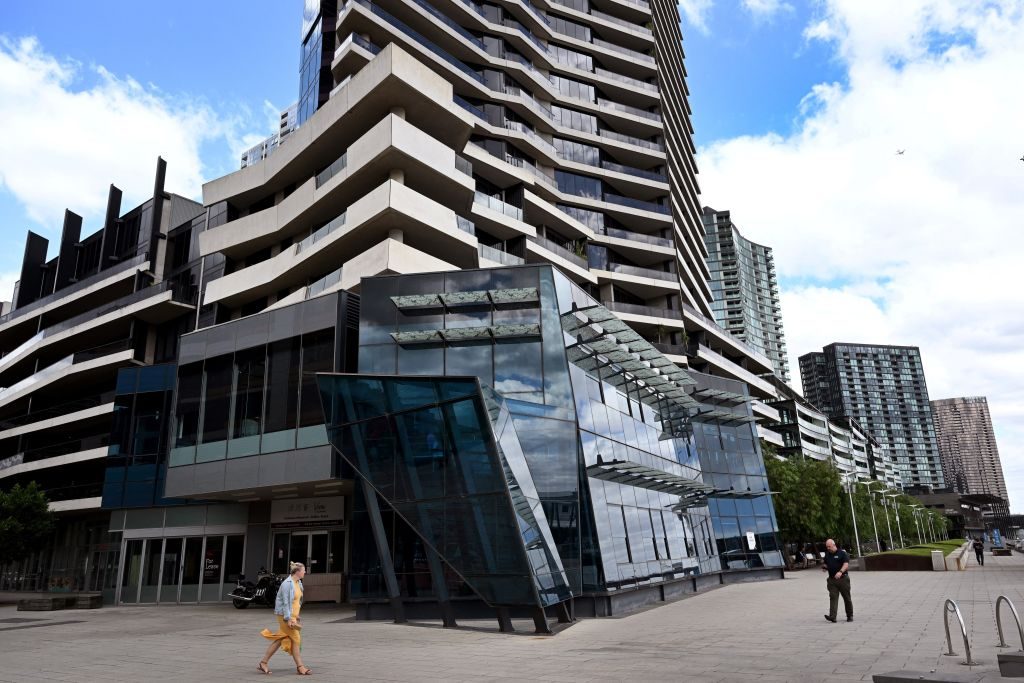

Neither major political party in Australia has a clear edge in driving a stronger property market, Domain’s latest study shows.
While Liberal terms saw slightly better house price growth (3.1% v 2.9%), Labor's terms outperformed in unit prices (4.5% v 1.4%) and first home buyer activity (first home owner-occupier loans of 34.4% v 30.5%).
Election day auctions?
Domain says sellers avoid them (auctions decline by 50% on election days), but data shows auctions held on election days actually achieve higher clearance rates (60.4%) than those the Saturday prior (59.5%) or after (59.8%).
While property transactions remain historically stable around elections, political uncertainty can slow sales, with a sustained impact over time.
Domain’s modelling shows that even a one-point rise in uncertainty can result in a decline of 8.08 property sales, with long term uncertainty potentially leading to thousands of lost sales.
The Australian Federal Election is expected to take place in April or May, 2025.
If you’re keen to get your home loan sorted before that time, be sure to compare some of the leading home loans in the Mozo database.
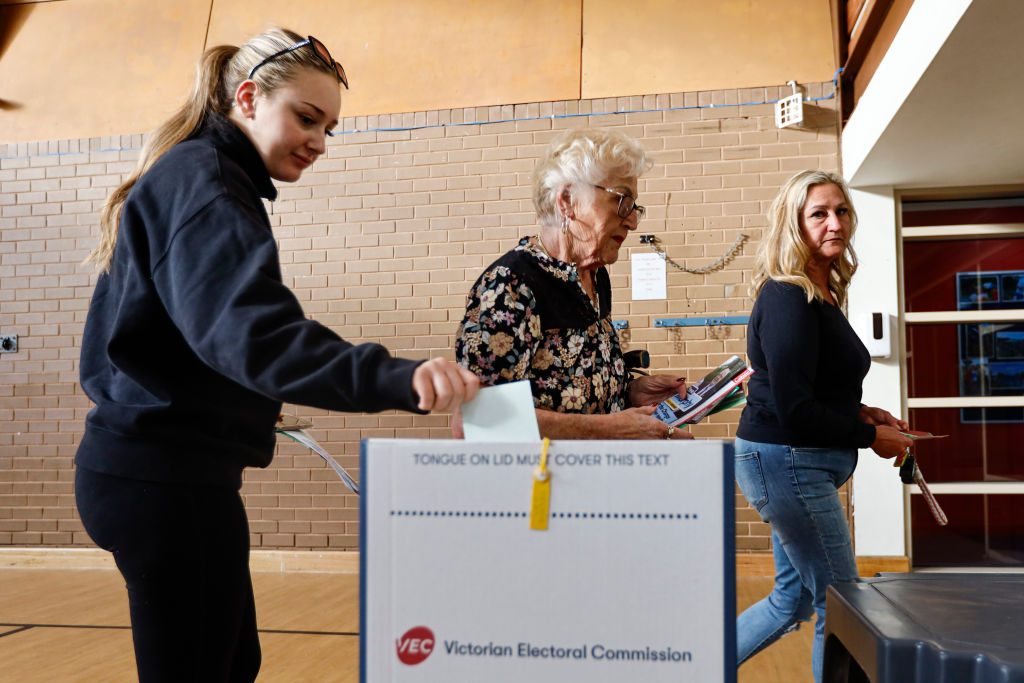

More Australians will be able to access 'no-interest loans' thanks to a $48.7 million funding boost from the federal government for the No Interest Loans program (NILs), NAB reports.
The NILs program – delivered by Good Shepherd with capital provided by NAB – has already helped more than one million Australians with over $560 million in interest and fee free loans over the past 21 years.
No interest loans are not available to everyone, however. According to Moneysmart, you must earn less than $70,000 (before tax) as a single person, or $100,000 (before tax) if you have a partner or children; or have experienced family or domestic violence in the last 10 years; or have a health care card or a pension card; and show that you can repay the loan.
Good Shepherd is a charity that provides services and support in the areas of family and domestic violence, financial insecurity and youth experiencing disadvantage.
NAB executive of sustainability, Jessica Forrest says NAB is proud to be the bank behind Australia’s longest standing no interest loans program, providing a safe and accessible way for people to borrow money when they need it the most.
"This additional funding means even more people on lower incomes can get the support they need without the stress of interest charges or hidden fees," she said. "These loans give people a safer alternative to high-cost payday loans and can also assist Australians escaping family, domestic and sexual violence – helping them with financial recovery and independence."
No-interest loans of up to $2,000 help cover household essentials like fridges, washing machines, and furniture, as well as education and medical expenses. NILs for vehicles loans of up to $5,000 can be used for motor vehicles, mobility scooters, registration, and maintenance costs.
If you're looking for another option, personal loans can be taken out from most lenders for amounts between $2,000 and $100,000, typically with loan terms of 1 to 7 years. Interest rates will vary depending on the lender and your loan assessment.
Mozo’s experts hand-pick some of the leading low-interest loans around, ensuring that when you compare personal loans you’re getting a full view of the top features and benefits.


Bank of Sydney is waiving the need for Lenders Mortgage Insurance (LMI) for selected professionals on Principal & Interest (P&I) investor loans with an 80-90% loan-to-value ratio (LVR).
The waiver applies to the following accredited professions: accountants, lawyers, registered engineers, medical practitioners & commercial pilots.
Bank of Sydney's Basic Home Loan won the Low-Cost Home Loan Award in the Mozo Expert Choice Awards 2023.
For all other borrowers: It’s likely you’ll be required to pay LMI if your deposit is less than 20% of the home’s value. Lenders mortgage insurance protects the lender if you’re no longer able to meet your home loan repayments and your property needs to be sold.
LMI can be a one-off payment made during the home loan settlement, but more often it is lumped into the overall cost of your home loan so you pay it off over time. Be aware that if it’s tacked onto your home loan, it will accrue interest and ultimately see you pay more in the long run.
If you’re looking to take out a new home loan or refinance an existing mortgage, be sure to compare rates, fees and features. See our range of fixed rate or variable loans to discover which best suits your needs.

Good morning and welcome back to Mozo's live coverage of everything interest rates! Stay tuned as we dive into today’s news.
Macquarie Bank has trimmed its fixed rate home loans for both owner occupiers and investors. This includes both principal and interest (P&I) loans and interest-only (IO) loans.
Here are the changes, effective today:
This means that Macquarie Bank is offering a 2-year fixed rate Basic Home Loan at 5.39% p.a. (comparison rate 5.82% p.a.) for applicants with <70% loan-to-value ratio (LVR).
If you’re looking to take out a new home loan or refinance an existing mortgage, be sure to compare rates, fees and features. See our range of fixed rate or variable loans to discover which best suits your needs.
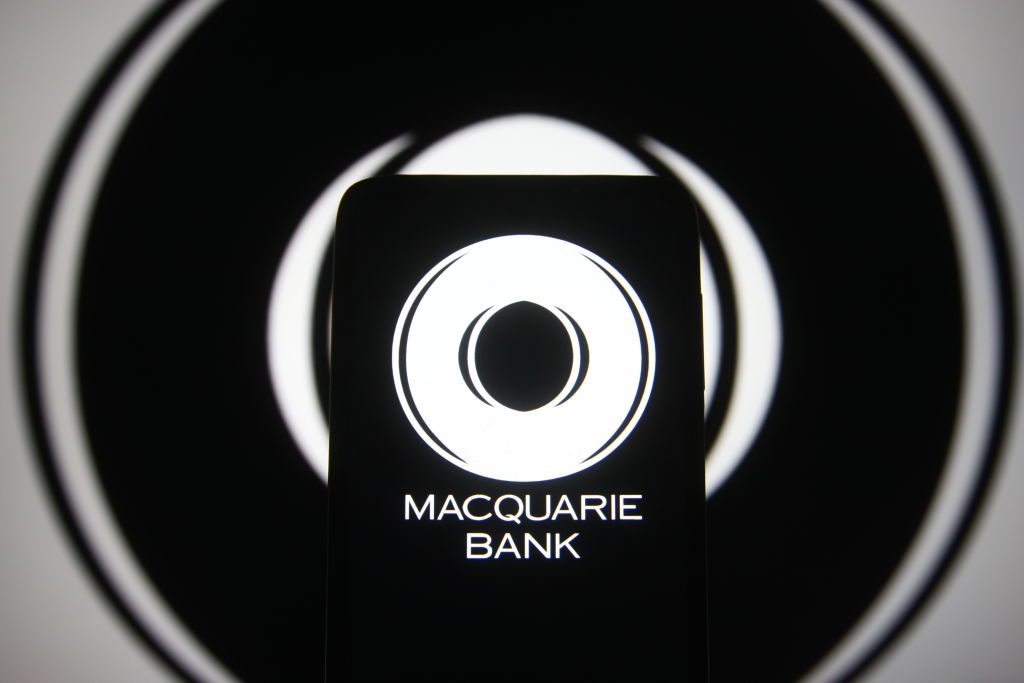

Thanks for joining us on the live blog today – here’s what you might have missed:
Join us again tomorrow for more interest rate and banking news as it happens.

1. The impact of escalating trade wars and the associated uncertainty is a 'key risk' to NAB’s latest outlook. Overall, the bank’s analysts expect tariffs and slower global growth to be disinflationary for Australia, though a lower exchange rate would offset some of the weaker income effects. Tariff uncertainty may weigh on consumer and business sentiment however.
2. Supported by household consumption, the economy grew 0.6% in Q4 of 2024, taking growth over the year to 1.3%, which is broadly as NAB expected.
3. Business investment on the other hand remains sluggish, while stronger growth in exports than imports meant net exports added to growth. The labour market remains resilient, with stronger growth in Q4 market sector employment. The January CPI shows a weaker outlook on housing and market services.
4. NAB expects inflation to ease gradually from here and reach the midpoint of the target band by Q2 of 2025. This is more optimistic than the Reserve Bank’s forecast and NAB expects it will trigger the next interest rate cut in May. NAB says the RBA will gradually ease rates from there to 3.1% in early 2026.
5. A pick-up in household consumption will drive growth closer to its long run trend over 2025, NAB concludes. However, it will be important to see both business investment and dwelling investment pick up to sustain growth – especially as some uncertainty around the extent of the consumer recovery remains.
*This information is from NAB's 'Forward View – Australia: March 2025' report.
Looking to improve your savings during these uneven economic times? Mozo compares some of the market's leading savings accounts.
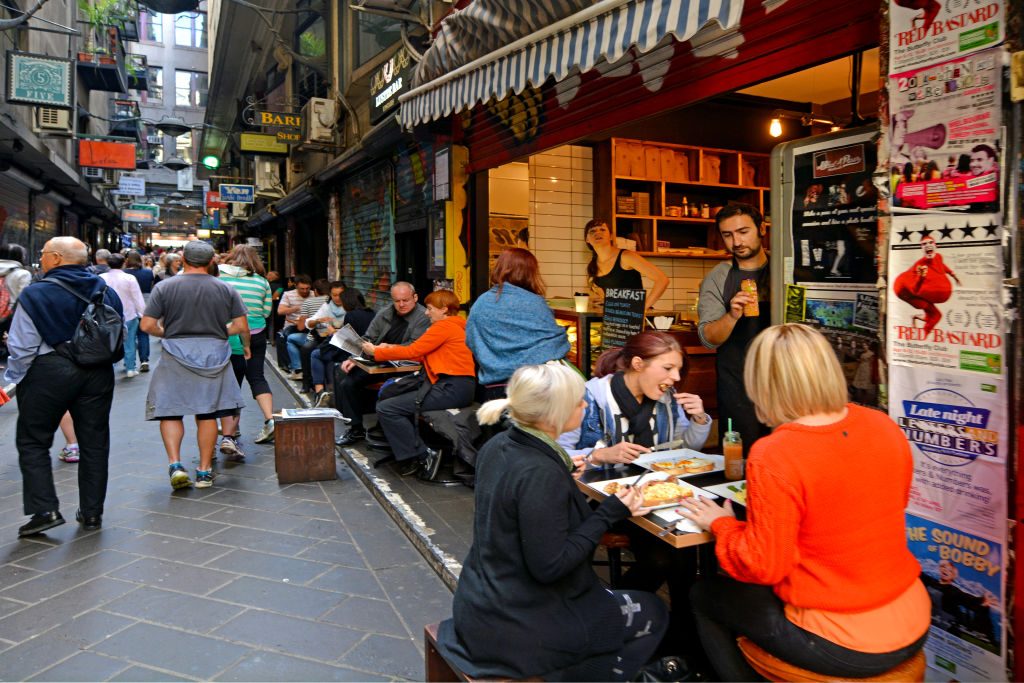

Westpac has announced a new term deposit option geared towards social responsibility in an Australian first.
Westpac’s Social Tailored Deposit requires a minimum deposit of $1 million and comes with terms of 1 to 5 years.
The bank says that funds in the Social Tailored Deposit will be used to invest in social assets which support essential services, affordable housing and accelerate socioeconomic advancement.
“We’re delighted to be launching this Australian-first deposit solution with three Westpac Institutional Bank clients: City of Sydney, University of Sydney and La Trobe University,” says Westpac’s Institutional Bank Chief Executive, Nell Hutton.
With a minimum deposit of $1 million, the Social Tailored Deposit won’t be available to the everyday customer.
If you’re interested in a Westpac term deposit, there are options available which come with a minimum deposit of $5,000, and a top rate of 4.60% p.a. at the time of writing.
To see more deposit rates, compare term deposits or take a look at high interest savings accounts.

APRA says it’s reluctant to lower the regulatory standards that keep Australia’s financial system resilient and our economy strong, particularly with increasing geopolitical risks.
Speaking at the AFR Banking Summit this week, APRA chair John Lonsdale said this doesn’t mean APRA is closed off to making its prudential framework simpler, less burdensome or more proportionate. However, it is focused on customer safety.
“Unlike deregulation, which can mean lowering standards, this simplification means making regulation easier to understand and implement and less costly and burdensome to comply with,” he said.
"APRA’s prudential framework has a significant level of proportionality, with simpler requirements in some areas for smaller, less complex and less systemically important institutions where it’s safe to do so.
"However, we are always looking to balance regulation benefits and costs, as well as transparency."
Lonsdale noted the current environment is high on speculation and short on certainty, and this increases the degree of difficulty financial leaders face making decisions.
He also said that APRA is mindful of community concerns about the level of competition in banking and insurance and is actively exploring how to make its framework even more proportionate without harming financial safety.
"Governance is integral to the safety and stability of the entities we regulate and the outcomes they deliver for the community," Lonsdale added. "When financial institutions are well-led and make good decisions, they are more financially successful and better able to withstand a crisis.
"Poor governance creates weaknesses, which can crystallise in misconduct, losses and failures."
Mozo's in-house experts look to make your money decisions easier by hand-picking the personal finance products that truly standout. Check out Mozo's Experts Choice Awards right here!


Westpac has reported a 45% increase in home loan refinancing over the past quarter to January as homeowners seek mortgage savings amid ongoing cost-of-living pressures.
The bank's Home Ownership Report reveals that 30% of homeowners are considering refinancing, with 82% wanting a smoother digital process.
In response, Westpac introduced a 5.84% p.a. rate for owner-occupier refinancers with up to 70% LVR through its online home loan.
“Making the switch to Westpac through our Online Home Loan offer could save customers $169 on their monthly repayments, with savings over the life of the loan of $50,929+, based on a $600,000 owner occupier home loan with principal and interest repayments," said James Hutton, managing director of mortgages.
Westpac’s digital refinancing platform that launched in 2022 has seen customer usage more than double in three years. This goes to show the growing preference for online financing that borrowers are seeking from both big and small providers alike.
Looking for banking and interest rate news? Check out the Mozo live tracker for more!

Happy Wednesday! Welcome to Mozo's live coverage of everything interest rates and banking.
The Customer Owned Banking Code Compliance Committee (COBCCC) reports a 26% reduction in code breaches for 2023-24, reflecting stronger compliance across the sector.
Chair Danielle Press says, “The reduction in breaches is encouraging and reflects the sector’s investment in better compliance measures.”
The report revealed 3,443 total breaches (down 25%) affecting 455,199 customers (down 44%), though the financial impact increased.
The COBCCC mentions that clear product information remains important, with ambiguous terms and conditions still causing customer confusion.
Customer-owned banks are owned by members and are also typically known as building societies, credit unions and mutuals. They provide the same products and offer the same government protections as investor owned banks.
Some of the customer owned banks we track have taken some wins in our Mozo Experts Choice Awards including Great Southern Bank, Qudos Bank, and The Mutual Bank. Other notable banks that took out peoples choice awards include Newcastle Permanent, Beyond Bank, and Greater Bank.
Keen to see how your bank has responded to the RBA’s recent rate cut? See Mozo’s live rate tracker to keep up to date with the latest.

CommBank has just launched Yello for Business, offering small businesses immediate discounts on essentials like internet, workwear and equipment hire. The move comes as small businesses face rising costs, with some goods and services now 20% more expensive than five years ago, according to CBA’s group executive for business banking, Mike Vacy-Lyle.
More than 340,000 businesses are eligible, with those holding a business loan or finance product unlocking bigger savings. Instead of earning points, businesses get upfront discounts on things they already pay for, meaning no waiting and no complicated redemptions.
Read more about the Yellow for Business program and eligibility requirements.
With costs climbing, every bit of savings helps. So if you're looking to cut costs further or boost cash flow, comparing business loans could be another way to stay ahead.
Okay, that's all for today, thanks for joining us. Check back in tomorrow for more live blog coverage of all things interest rates, home loans, savings and more!

Passion for travel is alive and well with more than three-quarters (78%) of Aussies planning to take up to three holidays this year, signalling a strong appetite for both local and international getaways, as per American Express’ 2025 Global Travel Trends Report.
For domestic trips, 51% of Aussies will travel just as much as they did in 2024, while 34% are planning to travel even more.
For international travel, 43% will maintain their usual travel habits, with approximately one-third (34%) saying they’ll venture abroad more frequently this year.
Many Australians are not only planning to travel more but want to travel smarter by selecting destinations that offer the best value as well as curated, unique experiences.
Top priorities for holiday-goers this year include places that match their budget (68%), followed by places that match interests such as food, sport and fashion (42%), as well as locations that offer authentic local experiences (42%).
Vice president and general manager of American Express travel and lifestyle services, Corinne Ng says all up Aussies are redefining travel by prioritising meaningful experiences, maximising reward points and blending technology with personal insights.
Travel is more intentional than ever, she explains.
"The report highlights how important travel is to Australians and how planning every trip is now smarter, more rewarding and personal," Ng says.
If you have an upcoming trip and want to get the most out of rewards points, be sure to compare rewards cards right here on our Rewards Credit Card hub page.


Westpac has rolled out a new online refinance offer with rates of 5.84% p.a. (5.85% p.a. comparison rate) for owner-occupiers and 6.09% p.a. (6.10% p.a. comparison rate) for investors.
Both home loans sit well below the market averages of 6.45% and 7.08%, making this the sharpest deal from a big 4 bank right now.
The offer applies to Flexi First Option Home Loans and includes two key discounts:
Additionally, you must be refinancing from outside the Westpac group (ie, not from Westpac, St. George, Bank of Melbourne, BankSA or RAMS).
Competition is heating up, and Westpac’s move could light a fire under competitors. But while a lower rate is always good news, switching loans does require some careful deliberation.
Features like offset accounts, repayment flexibility and any fees involved should all be part of the decision.
So if you’ve been thinking about refinancing, this could be a good time to compare your options.
One way to do this is by checking out our live interest rate tracker where you can see, in real time, how lenders are reacting to the RBA’s rate cuts, who’s passing them on and by how much.

Freedomlend lowered its variable home loan rates by a range of 0.25-0.95% and 0.85-1.55% for fixed loans for new customers.
Rates are dependent on both different loan products and the conditions applied to them.
Freedomlend is a Melbourne-based non-bank lender with some very competitive interest rates at the time of writing.
For example, its Variable Home Loan for owner-occupiers (P&I) is just 5.90% p.a. (5.91% p.a. comparison rate), provided you have a minimum 30% deposit.
Freedom Lend has also picked up a number of awards over the years, including a Mozo Experts Choice Awards in the ‘Low Cost’, ‘Offset’, and ‘Investor’ home loan categories.
You can start comparing some of the top home loans in our database right here - check out our Home Loans hub page.


A new report suggests that Australian lenders are on the cusp of a technological shift that will change how home loans are processed, approved and serviced.
Key findings from the research entitled, "Second generation technology: Banking on the next transformation," note how AI is transforming loan processing specifically.
For example, a case study from the report shows how tech firm Nextgen, helped Beyond Bank reduce loan approval times to between 24 and 48 hours while saving an estimated 300,000 pieces of paper annually.
Nextgen has built an open banking loan lodgement platform called ApplyOnline and partners with many Australian mortgage brokers such as Beyond Bank, MyState Bank and Westpac.
The report says such digitisation in banks is improving online mortgage applications, document and ID verification, and of course, loan processing times.
Last year, the McKinsey Global Institute estimated that across the global banking sector, generative AI could add between $200 billion and $340 billion in value annually, or 2.8 to 4.7 percent of total industry revenues, largely through increased productivity.
However, as banks and other financial institutions move to quickly implement the technology, obvious challenges are emerging. While AI might unlock clear-cut value, hurdles such as the generation of false or illogical information, intellectual property infringement, limited transparency and issues of bias are still a possibility.
Australia’s banking sector does seem to be ahead of the game however, at least based on the findings of this new report.
The paper cited here was published by the thought leadership division of The Australian Financial Review and commissioned by NextGen.
Looking to buy a home? Explore some of the top home loans in our database on our home loans hub page.


Good morning and welcome back to our running coverage of interest rates, banking and personal finance!
Today, Proptrack reports that increasing property prices have pushed many Aussie buyers, especially first-home buyers, to expand their search further out.
This typically means looking at 'outer-rim' suburbs, usually 25 or 30 kilometres from a city’s CBD.
Recent data shows there are indeed suburbs in each capital with houses once below median value that have seen incredible price growth in the past year (to February) - indicating surging buyer interest.
For example, in Sydney, where the median house price recently hit $1.425 million largely due its homes within the 20 kilometre mark, Fairfield has gained new popularity.
Fairfield is 30 kilometres west of the CBD and yet its median price rose by 23% to $1.155m (year on year), says Proptrack.
Similarly, house prices in Mardi, Tallawong and Green Valley also increased by more than 20% in the past year.
Melbourne had some similar price jumps, including in Cranbourne South, which is 49 kilometres from the CBD. House prices there rose by 10.5% to $828,500 in the year to February.
The approach of looking beyond inner-ring suburbs is not a new one. However, more homebuyers are clearly refocusing their efforts on areas that haven’t been as heavily impacted by inflated buyer demand.
A better price also usually means a more manageable home loan. You can start comparing some of the top home loans in our database right here - check out our Home Loans hub page.


New home loans funded across Australia increased by 18% in the December quarter of 2024 to $179bn compared to $153bn in the same period of 2023, according to the latest data from APRA.
New owner-occupier loans held steady at 67% of the total and investment loans made up about 30%.
Interestingly, new home loans with an 80% loan-to-value ratio also held at about 31% of the total.
LVRs of 80% have typically been the standard across Australia, although in recent years as property prices have escalated, some lenders have offered higher LVRs of 90%.
The latest data shows that the average owner-occupier mortgage in Australia is $642,121, as per the Australian Bureau of Statistics (ABS) in September 2024.
This represents a 7% annual increase on the prior year.
In fact, the average mortgage in Australia grew 74% over the past decade according to data from the ABS' Lending Indicators released in September 2024.
Of course home loan amounts are usually different by state, with NSW, Victoria and Queensland loans typically much higher than in the other states and territories.
For example, the average loan size in NSW has risen from $780,000 in the September quarter of last year, up to $811,000 as of December, as per ABS data.
Getting into property? You can easily compare home loans right here at Mozo.
Okay, that's all for today, thanks for joining us. Check back in tomorrow for more live blog coverage of all things interest rates, home loans, savings and more!


Bendigo Bank leads the competition in customer satisfaction among home loan customers, with an impressive rating of 87.7%, according to Roy Morgan’s latest satisfaction survey.
This high score is largely due to its strong focus on customer service.
ING followed in second place at 83% satisfaction, praised for its low fees and competitive interest rates.
Macquarie ranked third at 82.9%, also benefiting from similar strengths in fees and rates.
Suncorp Bank saw the biggest improvement, rising 5% to 79%. It's another bank strongly associated with good customer service.
Bankwest experienced the largest drop in satisfaction though, falling 17% to 72%, following the closure of its branches in Western Australia.
Overall, customer satisfaction among Australia’s top banks declined slightly to 73.7% in late 2024, down 0.6% from the previous year (six months to December 2023).
Roy Morgan general manager of financial services, Suela Qemal says the current level of home loan customer satisfaction is almost identical to that in December 2019 (74%), immediately prior to the pandemic.
"While home loan customer satisfaction across the top banks peaked in the six months to February 2021 at 80% coinciding with mortgage holidays, it soon began to drift downwards as mortgage repayments resumed for hundreds of thousands of borrowers," Qemal said. "Since early 2022 there has been the additional impost of rising interest rates."
If you're not so satisfied with your bank and perhaps thinking about a home loan switch, why not compare some of the best loans in our database on our Home Loans hub page.


ANZ has made significant cuts to its savings account interest rates, with changes taking effect from today (17 March 2025). The biggest hit comes to the ANZ Online Saver, where the introductory bonus rate of 2.25% p.a. has been completely removed.
This means new customers will no longer receive a boosted rate for the first few months, leaving the total maximum interest rate on the account at just 1.15% p.a. – a steep drop from the previous 3.40% p.a.
Meanwhile, ANZ’s Progress Saver account has also seen a slight reduction in interest, with its maximum rate dropping 0.10%, bringing the new rate to 3.75% p.a. for qualifying customers.
The average savings account interest rate on Mozo’s database is 3.40% p.a., meaning ANZ’s Online Saver now lags behind many of its competitors, making it a good time for Aussies to weigh up their options.
Searching for a better deal? Compare rates, fees and features of some of Australia's leading savings accounts to help you grow your money.


Sláinte and Happy St. Patrick's Day! Welcome to Mozo's live coverage of everything interest rates! Join us as we dive into this week's news.
The latest Westpac Weekly report gives us a look at what's shaping Australia's economy right now. Here are the biggest takeaways:
At Mozo, we help Aussies make smarter financial decisions by comparing some of the top personal finance products on the market. Whether you're looking for a high-interest savings account, a competitive home loan, or a low-fee bank account, we've got you covered. Check out our comparisons pages to find the best option for your money moves.